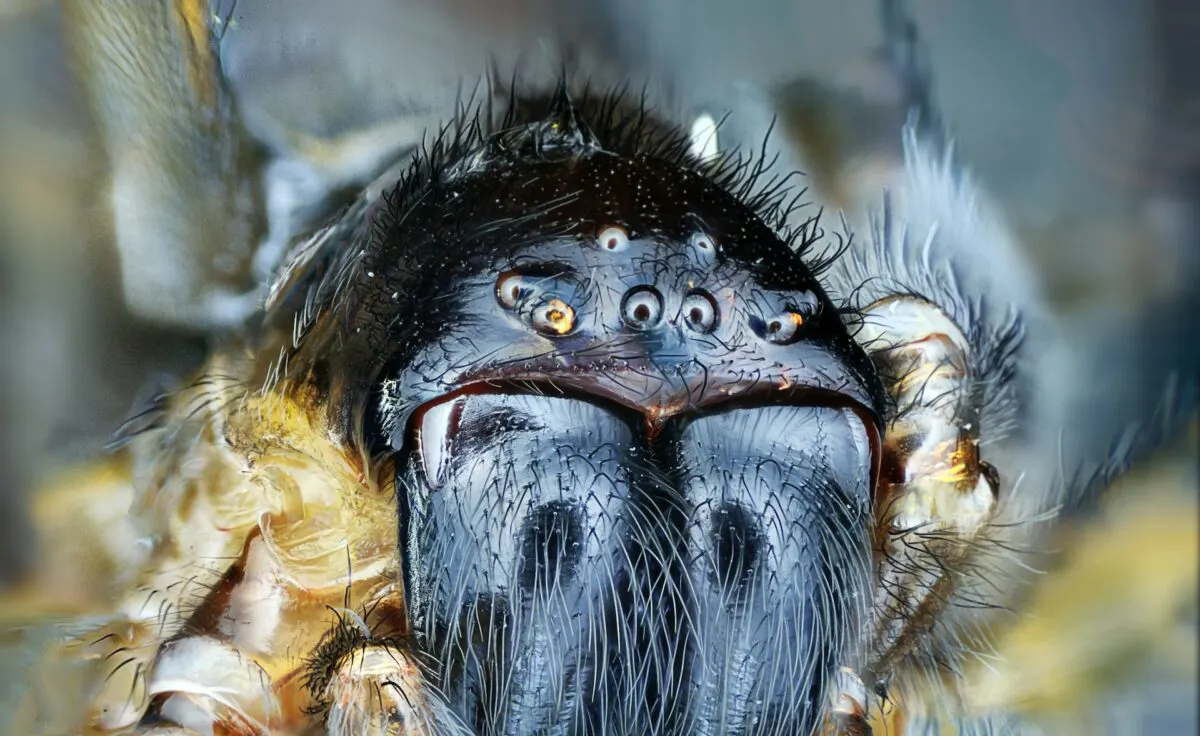Let’s dive into the story around the biggest spider web ever found and what spider responsible for this incredible construction – the Darwin’s Bark Spider.
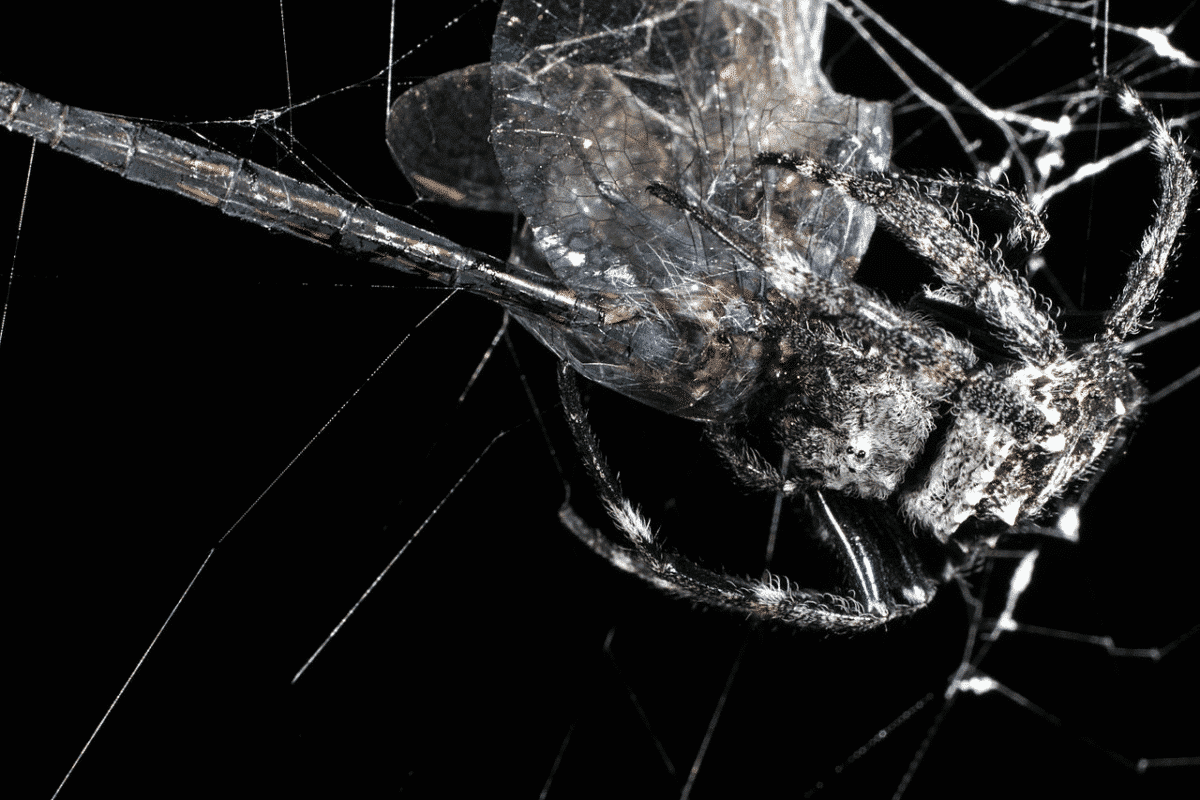
Spiders are mesmerizing beasts that have intrigued humanity for a long time. There are, after all, nearly fifty thousand known species worldwide! They have different sizes and shapes and live in other locales – having adapted to those specific environments – which makes them even more enjoyable.
By the end of this article, you’ll have a much greater appreciation for these amazing arachnids and their incredible webs. Let’s go!
Key Points
| Aspect | Description |
|---|---|
| Largest Spider Web | Discovered in Madagascar in 2010, over 80 feet long, suspended across a river, spun by Caerostris Darwini. |
| Darwin’s Bark Spider | Unique spider species in Madagascar, discovered in 2009, known for its incredibly strong silk. |
| Appearance and Behavior | Medium-sized spider, brown and yellow coloration, active at night, feeds on insects. |
| Web-Spinning Abilities | Produces silk stronger than steel, silk comprises multiple proteins, creates strong and large webs. |
| Significance and Research | Scientists study genetics and behavior for insights into silk production, exploring applications in various fields. |
| Other Giant Spider Webs | Golden Orb-Weaver Spider (Africa and Asia), Goliath Birdeater Tarantula (South America), Tunnel Web Spider (New Zealand) |
The Largest Spider Web Ever Found
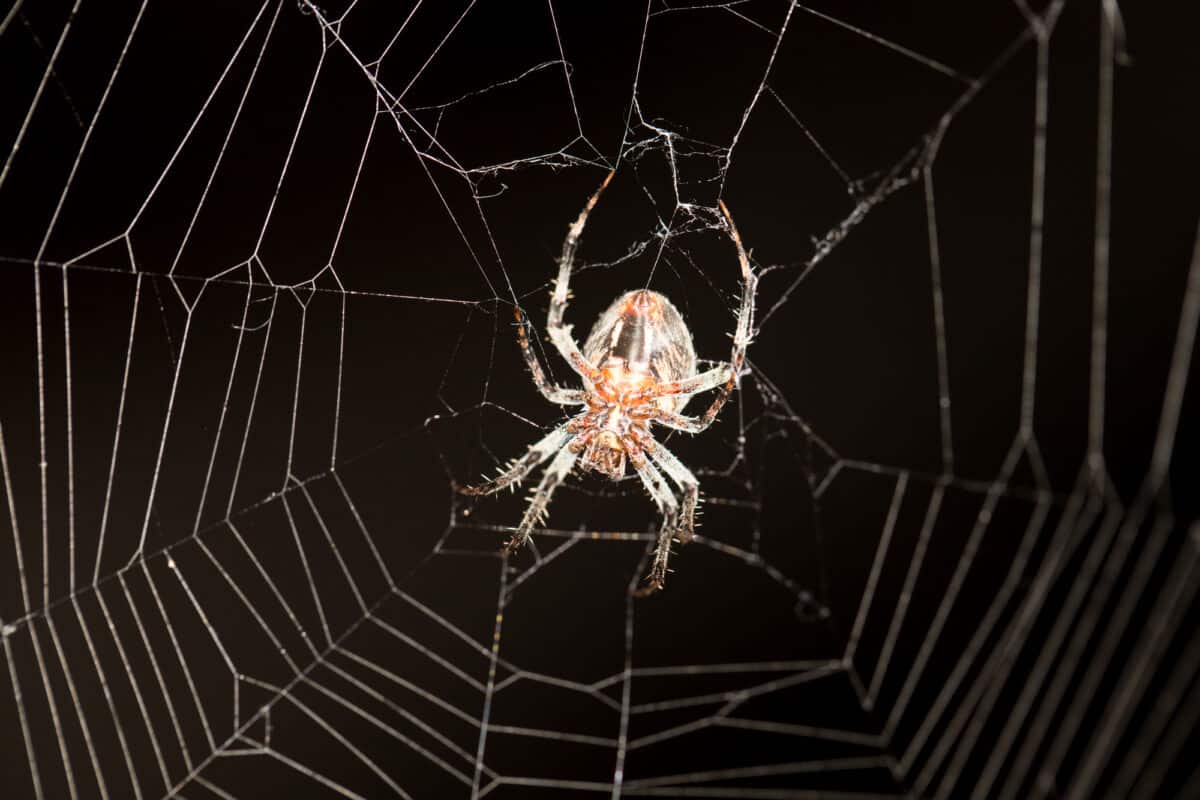
The largest spider web ever found in the world was discovered by a team of incredible researchers and got its claim to fame in 2010. The web was located in Madagascar, an island off the coast of Africa. It measured over 80 feet long and was suspended across a river. It was nothing short of an impressive feat of engineering and design.
A species of orb-weaver spider known as Caerostris Darwini spun this incredibly impressive web. This is the official scientific name and categorization of the spider typically known as Darwin’s Bark spider. The species is named after Charles Darwin, who was fascinated by spiders and their webs. Wonder what Darwin would’ve said if he could witness this enormous web?
Darwin’s bark spider is known for its unique web-spinning abilities, allowing it to produce silk stronger than steel of the same weight. This makes it the strongest biological material ever tested. It allows the spider to catch large prey and protect itself from predators.
The web spun by Darwin’s bark spider comprises individual strands of silk woven together to form a complex, three-dimensional structure. The web is designed to catch prey and is lined with sticky glue droplets that help immobilize insects and other small animals. The spider can sense vibrations in the web and uses this information to locate prey and avoid predators.
The discovery of the largest spider web ever found is an exciting development for spider researchers and enthusiasts alike. It highlights the incredible diversity of spiders and their webs. Moreover, it underscores the importance of studying these creatures for both scientific and practical purposes.
Darwin’s Bark Spider: The Weaver of Strongest Spider Silk
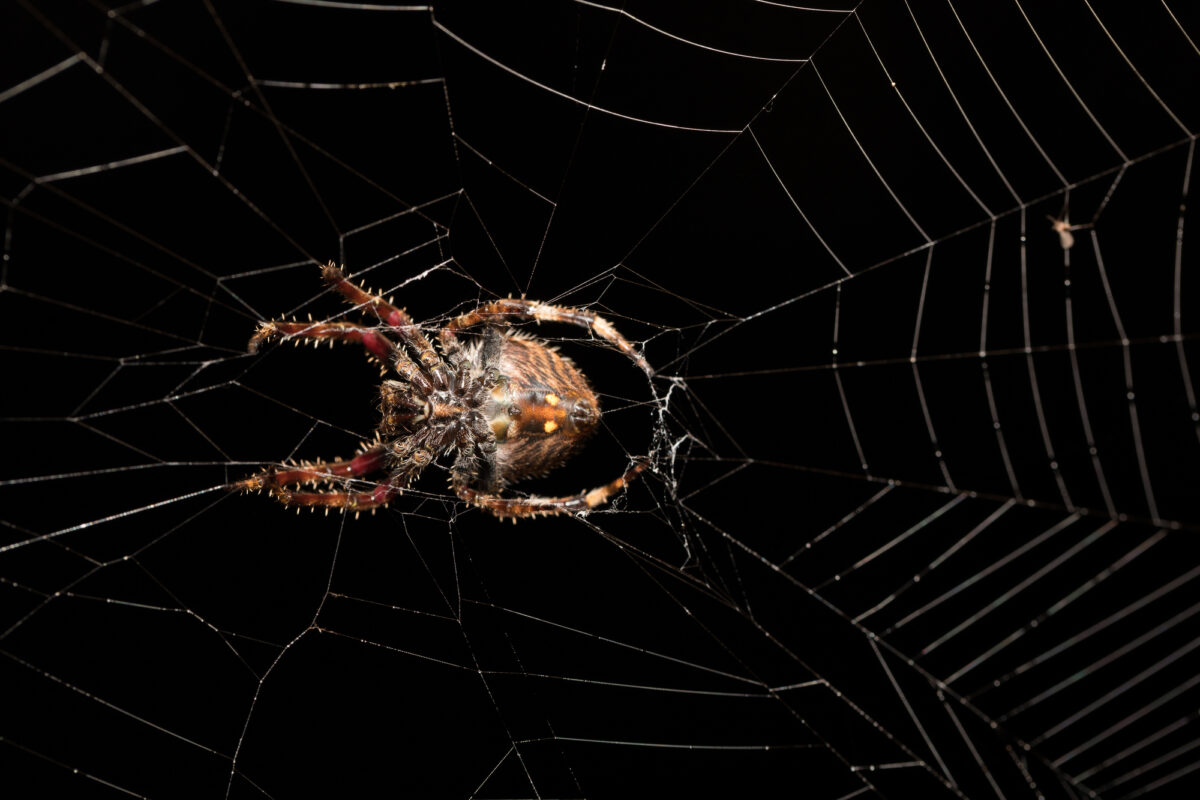
Darwin’s bark spider is a unique spider species found exclusively in Madagascar. Scientists officially ‘discovered’ it (categorizing and recognizing differing arachnids) in 2009. Ever since it has captured the attention of spider researchers worldwide, these spiders are harmless to humans and pets! But if you want to learn more about spiders and their venom, check out our dedicated articles on Venomous spiders.
Here are some fascinating facts about this remarkable spider:
Appearance and Behavior
- Darwin’s bark spider is a medium-sized spider with a body length of about 1 inch and a 5-inch leg span. While it might not be part of the 10 biggest spiders in the world it is still a good size!
- Its distinctive brown and yellow coloration helps it blend with trees, and thus that is where it spends most of its time.
- The spider is primarily active at night and feeds on insects, including moths, beetles, and flies.
Web-Spinning Abilities
- Darwin’s bark spider is known for its exceptional web-spinning abilities. They’re able to produce silk stronger than steel of the same weight.
- The spider’s silk comprises several types of protein that combine to create a tough, stretchy, and lightweight material.
- The silk is used to create incredibly strong webs. They typically range from 140 – 4,300 square inches and can reach 80 feet in length, as seen in the largest spider web ever found.
Significance and Research
The discovery of Darwin’s bark spider and its incredible silk has sparked significant interest among scientists studying its genetics and behavior to learn more about how it creates such strong silk.
Researchers are also exploring potential spider silk applications, such as developing new materials for medicine, construction, and other fields.
In conclusion, Darwin’s bark spider is a remarkable creature with impressive web-spinning abilities. Its silk is one of the strongest materials found in nature. New avenues for research and innovation have opened up following its discovery. The Darwin’s bark spider may have weaved the world’s biggest spider ever found, but they’re not the biggest spider – read about the world’s largest spider here.
Other Giant Spider Webs
While Darwin’s bark spider holds the record for the strongest spider silk and the largest web ever found, other spiders also spin impressive webs. Check them out:
Golden Orb-Weaver Spider
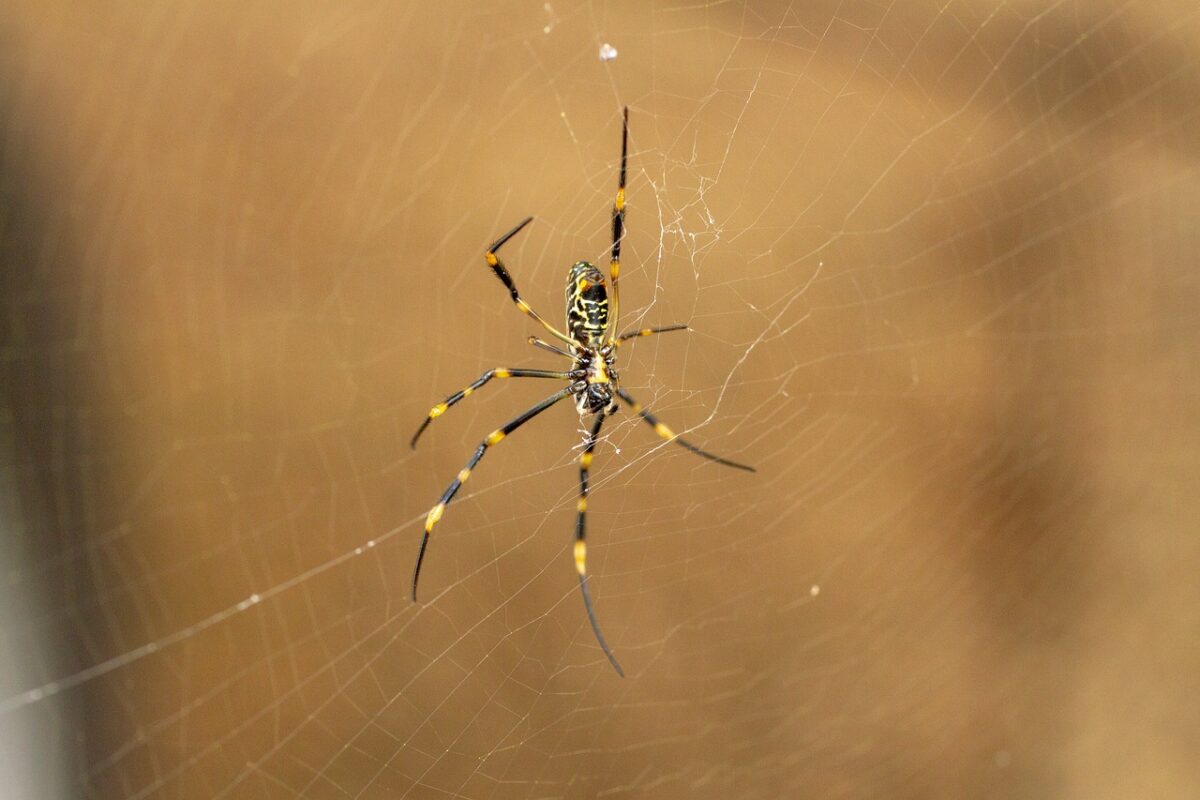
- The golden orb-weaver spider in Africa and Asia spins webs measuring up to 3 feet in diameter.
- The silk is yellow and incredibly strong, making it one of the toughest materials found in nature.
Goliath Birdeater Tarantula
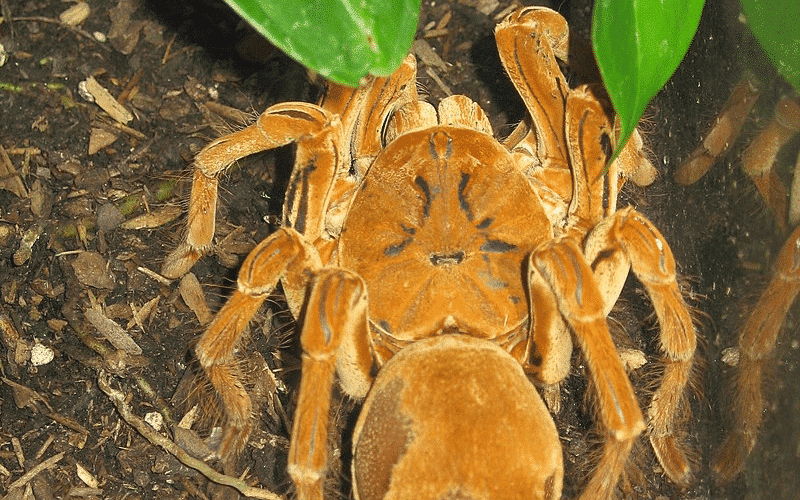
- The Goliath birdeater tarantula, found in South America, is the largest yet-discovered spider in the world by mass.
- It spins thick, strong webs that capture prey and protects its burrow.
Tunnel Web Spider

- The tunnel web spider, found in New Zealand, spins webs shaped like tubes. They can measure up to 7 feet in length.
- The silk is incredibly strong and sticky, allowing the spider to catch larger prey.
These spiders and their webs are just a few examples of the incredible diversity of spiders worldwide. Each species has unique adaptations and abilities – learn more about all kinds of spiders here.
Summary
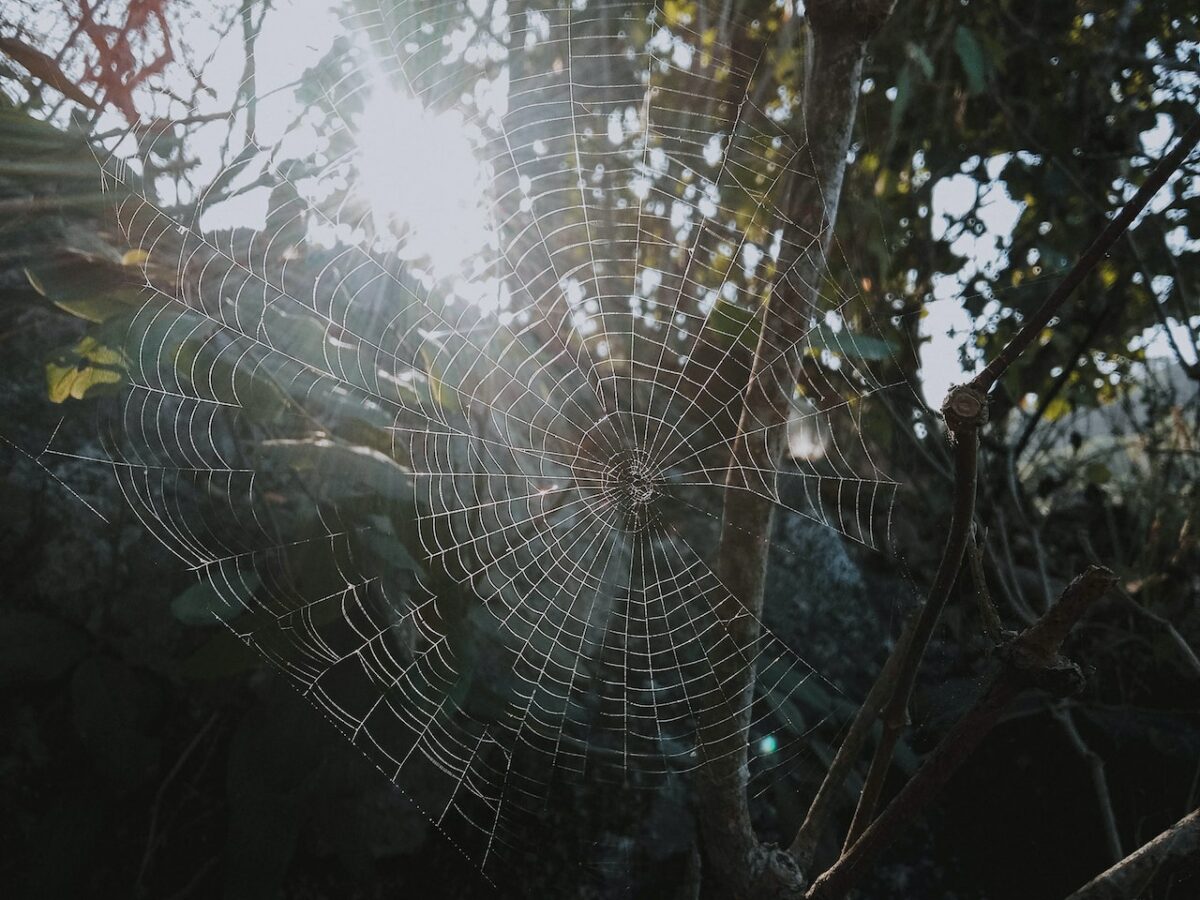
In conclusion, spiders are remarkable creatures with incredible abilities to spin webs of different shapes and sizes. Webs are designed to capture prey, used to protect burrows or to help the spider travel from one place to another. Darwin’s bark spider, with its massive web and super-strong silk, is just one of the many fascinating species of spiders around the world.
Through scientific research, we continue to learn more about spiders’ unique adaptations and abilities and their important roles in their ecosystems. While some may fear spiders, it is important to remember that these creatures play a vital role in ecosystems. They function in controlling and maintaining insect populations while also preserving ecological balance. All in all, they’re impressive multitaskers, right?
So next time you come across a spider or a spider web, take a moment to appreciate the beauty and complexity of nature’s designs.
Thank you for reading this article about the biggest spider web ever found! If you’re curious to learn more about these 8-legged creatures, read our post where we compare two different types of spiders. Or read our post that tells you all you need to know about flying spiders.
Frequently Asked Questions (FAQs)
Spider webs are primarily made of silk produced by the spider. Spider silk is composed of proteins and is extruded from the spider’s spinnerets, which are specialized silk-producing organs.
Spider webs serve multiple purposes, including catching prey (as in orb webs), providing shelter, and as a surface for courtship and egg-laying.
Spiders produce silk by secreting a liquid protein solution from their spinnerets. They can manipulate the silk’s properties by adjusting the glands that produce it and then use their legs to spin the silk into various forms for different purposes.
Spider silk’s remarkable strength is due to the unique molecular structure of its proteins. The proteins in spider silk are arranged in a way that provides both strength and flexibility.
Some spiders cover themselves in silk for camouflage, protection from predators, or to create a shelter where they can ambush prey or rest. This silk covering is often referred to as a retreat or a silken retreat.
Join our Forum for free today!


